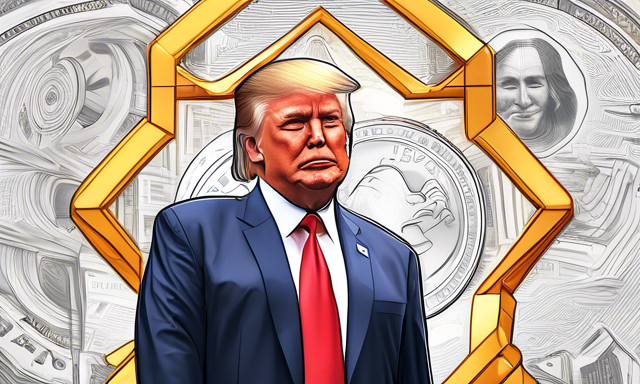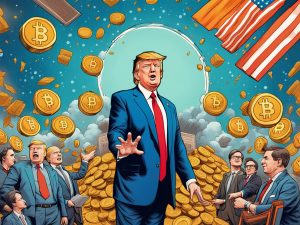Trump’s Commitment to the Crypto Community: A New Era? 🚀
Donald Trump’s recent victory in the 2024 US presidential race has sparked excitement among cryptocurrency enthusiasts. His platform includes significant pledges aimed at advancing the crypto landscape in the United States. With proposals designed to uplift the industry, industry leaders discuss the potential outcomes. However, skepticism exists regarding the practicality and economic rationale behind his promises.
Key Initiatives Proposed by Trump for the Crypto Sector 📈
The former president envisions a supportive environment for cryptocurrency, outlining several initiatives to bolster the industry. His suggestions include:
- Removing the SEC Chair: Trump plans to terminate Gary Gensler from his position, a move many within the crypto realm believe could alleviate regulatory pressures.
- Promoting US-Based Bitcoin Mining: The emphasis on local Bitcoin mining operations aims to enhance American involvement in the crypto economy.
- Establishing a Strategic Bitcoin Reserve: This initiative seeks to solidify the US’s stake in Bitcoin by creating a reserve for the cryptocurrency.
- Opposing Central Bank Digital Currency (CBDC): Trump has indicated a desire to block the implementation of a CBDC, a move that appeals to crypto advocates wary of government overreach.
- Commuting Ross Ulbricht’s Sentence: Trump has expressed a willingness to commute the prison sentence of the Silk Road founder, a controversial figure in the crypto world.
The proposed measures represent a stark shift in policy direction, aiming to reshape the regulatory landscape for cryptocurrency within the country this year. Advocates hope these efforts will foster an environment conducive to innovation and growth.
Industry Reactions: Optimism vs. Skepticism 🤔
While many crypto proponents are enthusiastic about Trump’s vision, leading figures within the industry express caution. The skepticism largely centers around the practicality of executing such ambitious initiatives. Key concerns include:
- Feasibility of Plans: Some industry experts question whether these promises can realistically be fulfilled given the complexity of navigating governmental processes.
- Economic Implications: Others are uncertain of the potential economic effects of removing regulatory oversight, raising questions about market stability.
- Political Dynamics: The current political landscape poses potential hurdles for implementing Trump’s agenda, which may not have unanimous support.
Debate continues within the community as to whether Trump’s crypto-friendly policies will truly materialize or if they serve as mere campaign rhetoric. The reactions highlight the inherent volatility of the political climate and its impact on the crypto market.
The Path Ahead: What Lies in Wait for Crypto? 🔍
As Trump steps into his new role, the future of cryptocurrency regulations and policies remains uncertain. Industry participants are keenly observing the developments, contemplating the potential changes and adjustments they may need to make. If Trump’s commitments come to fruition, the U.S. could see a substantial transformation in its approach to cryptocurrencies.
However, even with high hopes, it’s crucial to remain grounded. The interplay between political promises and actual policy implementation often proves challenging. Stakeholders are encouraged to stay informed and adaptive as they monitor how these dynamics evolve over the coming months.
Hot Take: The Future of Crypto Under Trump’s Leadership 🌟
As Trump lays out his vision for the crypto industry, the commitment to supporting innovation is clear. Nevertheless, it’s vital to remain cautious and analytical. The crypto landscape is often influenced by broader economic and political factors, which can complicate the best-laid plans.
Both optimism and skepticism coexist within the community, leaving many to wonder if his initiatives will genuinely reshape the crypto environment in America this year. As the industry watches closely, the outcomes will depend on the administration’s ability to navigate the intricacies of policy-making and economic realities.





 By
By
 By
By
 By
By
 By
By
